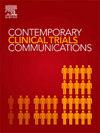The impact of a partnership care model on self-efficacy and self-care in hemodialysis patients: A quasi-experimental study
IF 1.4
Q4 MEDICINE, RESEARCH & EXPERIMENTAL
引用次数: 0
Abstract
Introduction and objective
Self-care and self-efficacy are crucial in managing kidney failure requiring hemodialysis. However, traditional education methods have not effectively improved self-care and self-efficacy. Therefore, utilizing more effective models, such as the partnership care model, is essential. This study aimed to determine the impact of the partnership care model on self-care and self-efficacy in hemodialysis patients.
Materials and methods
This quasi-experimental study was conducted with 74 hemodialysis patients at Shahid Beheshti Hospital in Hamadan. Patients were divided into control and intervention groups. The control group received only routine care, while the intervention group received nursing care based on the partnership care model in addition to routine care. This included eight educational sessions over one month, with two sessions per week. Data were collected using self-care and Sherer self-efficacy questionnaires before and two months after the intervention. Data were analyzed using SPSS version 16.
Results
The study demonstrated significant improvements in self-care and self-efficacy among hemodialysis patients following the collaborative care intervention. Post-intervention, the experimental group showed substantial benefits with an effect size of 1.41 for self-care (95 % CI: 0.87–1.95, p < 0.001) and an effect size of 1.55 for self-efficacy (95 % CI: 0.99–2.10, p < 0.001), highlighting the effectiveness of the intervention.
Conclusion
The study demonstrated that the partnership care model, through comprehensive education and social and motivational support, significantly improved self-care and self-efficacy in hemodialysis patients. Therefore, it is recommended that hospitals and nurses adopt this model to enhance the health and quality of life of patients.
伙伴关怀模式对血液透析患者自我效能感和自我关怀的影响:一项准实验研究
自我护理和自我效能感对治疗需要血液透析的肾衰竭至关重要。然而,传统的教育方法并没有有效地提高自我保健和自我效能感。因此,利用更有效的模式,如伙伴关系护理模式,是必不可少的。本研究旨在探讨伙伴关怀模式对血液透析患者自我关怀和自我效能感的影响。材料与方法对哈马丹市Shahid Beheshti医院74例血液透析患者进行准实验研究。患者分为对照组和干预组。对照组仅给予常规护理,干预组在常规护理基础上给予基于伙伴护理模式的护理。这包括为期一个月的八次教育课程,每周两次。在干预前和干预后2个月分别采用自我护理问卷和Sherer自我效能问卷收集数据。数据分析使用SPSS version 16。结果血透患者在接受协同护理干预后,自我护理和自我效能感均有显著提高。干预后,实验组在自我护理方面表现出显著的效益,效应值为1.41 (95% CI: 0.87-1.95, p <;0.001),自我效能的效应量为1.55 (95% CI: 0.99-2.10, p <;0.001),突出了干预的有效性。结论同伴关怀模式通过综合教育和社会动机支持,显著提高了血液透析患者的自我关怀和自我效能感。因此,建议医院和护士采用这种模式,以提高患者的健康和生活质量。
本文章由计算机程序翻译,如有差异,请以英文原文为准。
求助全文
约1分钟内获得全文
求助全文
来源期刊

Contemporary Clinical Trials Communications
Pharmacology, Toxicology and Pharmaceutics-Pharmacology
CiteScore
2.70
自引率
6.70%
发文量
146
审稿时长
20 weeks
期刊介绍:
Contemporary Clinical Trials Communications is an international peer reviewed open access journal that publishes articles pertaining to all aspects of clinical trials, including, but not limited to, design, conduct, analysis, regulation and ethics. Manuscripts submitted should appeal to a readership drawn from a wide range of disciplines including medicine, life science, pharmaceutical science, biostatistics, epidemiology, computer science, management science, behavioral science, and bioethics. Contemporary Clinical Trials Communications is unique in that it is outside the confines of disease specifications, and it strives to increase the transparency of medical research and reduce publication bias by publishing scientifically valid original research findings irrespective of their perceived importance, significance or impact. Both randomized and non-randomized trials are within the scope of the Journal. Some common topics include trial design rationale and methods, operational methodologies and challenges, and positive and negative trial results. In addition to original research, the Journal also welcomes other types of communications including, but are not limited to, methodology reviews, perspectives and discussions. Through timely dissemination of advances in clinical trials, the goal of Contemporary Clinical Trials Communications is to serve as a platform to enhance the communication and collaboration within the global clinical trials community that ultimately advances this field of research for the benefit of patients.
 求助内容:
求助内容: 应助结果提醒方式:
应助结果提醒方式:


